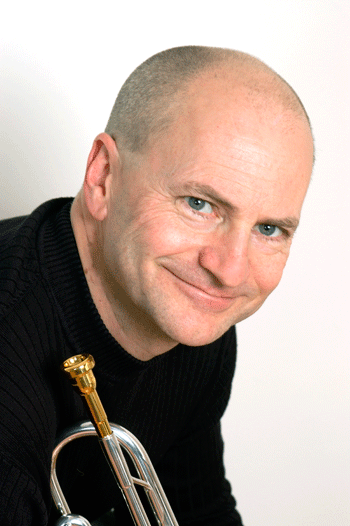I often compare brass players to singers because we share the significant element of vibrating a part of the body to produce sound. If the voice is the purest musical instrument, I consider brass instruments to occupy the next rung on the ladder. But let’s compare a brass and a string instrument, say a trumpet and a violin. On the surface they seem quite different, other than that they play in a similar register. But dig a little deeper, and similarities appear.
Lips and Strings
The trumpet player’s lips may be compared to the violinist’s strings. The vibrational frequency (pitch) of the violin string is determined by the tension of the tuning peg and the position of the finger on the fingerboard. The vibrational frequency of the lips is determined by the tension and shape of the embouchure. When a violin string is tensioned to a certain pitch, it will emit that pitch regardless of whether the string is plucked, bowed, played loud or soft. Similarly, if a trumpet embouchure is well formed, the same pitch emits regardless of whether the note is played loud or soft, tongued or not. Though a little trickier on a trumpet than a violin, it can be demonstrated.
Air and Bow
The trumpet player’s air may be compared to the violinist’s bow. If the bow does not move smoothly across the string, the sound will be scratchy and stuttering. Similarly, the airstream must move steadily and assuredly across the lips in order to produce a resonant trumpet tone. The trumpet player does well to visualize a violin bow when striving to produce a smooth airstream. The violinist invests substantial money into the bow and effort into developing proper bow technique. The trumpet player should invest substantial time and effort into developing and utilizing the power of the airstream.
Staccato and Pizzicato
The trumpet player’s tongue when producing staccato may be compared to the violinist’s fingers when producing pizzicato.
Horn blowers and bow jockeys are more alike than one might suspect. No wonder then, the natural affinity that one often feels for the other.
About the Author
Chase Sanborn is a jazz trumpet player based in Toronto. He is on the faculty at the University of Toronto and is the author of “Brass Tactics,” “Jazz Tactics,” “Tuning Tactics” and “Music Business Tactics.” Chase is a Yamaha Artist.
Visit his website at www.chasesanborn.com. Questions about all things brass-related can be sent to info@chasesanborn.com.

